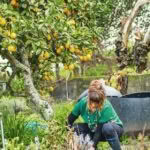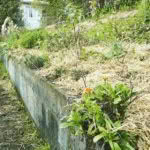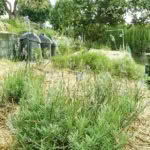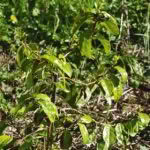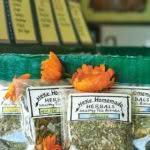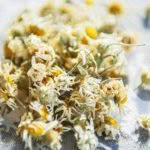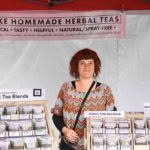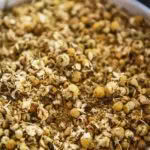Nelson gardener Emma Heke is brewing a strong herbal tea business
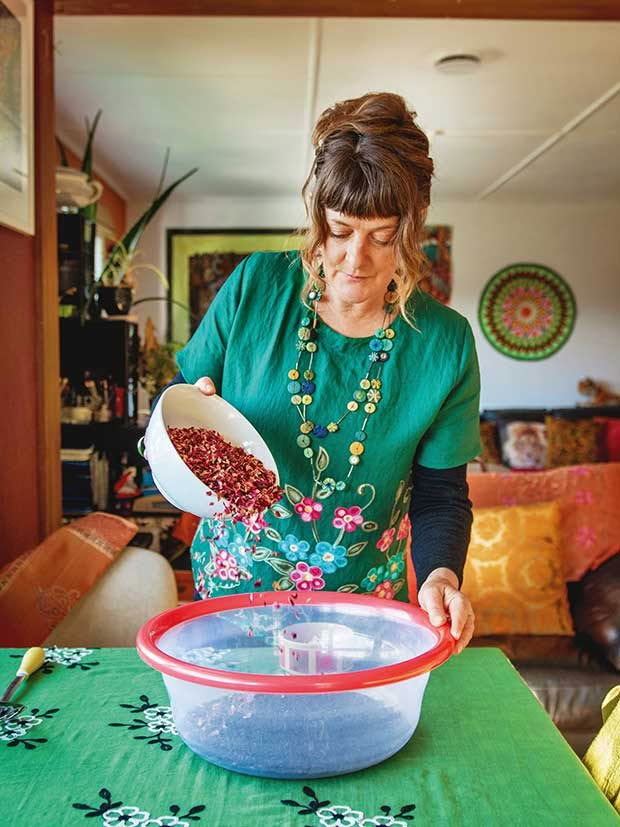
A herbal tea hobby has brewed into a strong cup of business for a Nelson gardener.
Words: Kristina Jensen Images: Daniel Allen
Additional images: Kristina Jensen
Who: Emma Heke
Where: Nelson
What: herbal tea business
Web
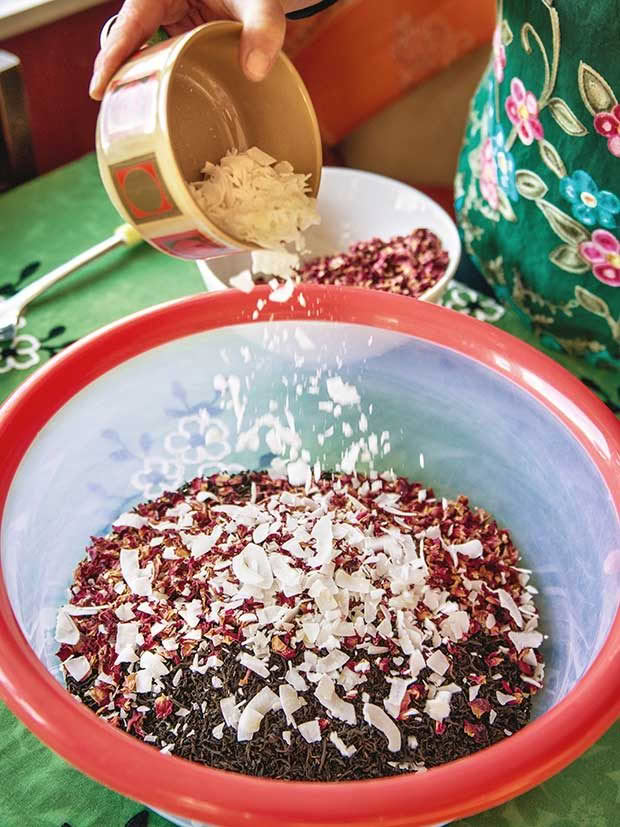
Great ideas often start over a cup of tea. Emma Heke’s business plan came to life over a steaming brew of dried herbs, grown in her quarter acre garden.
“I’ve always been a tea drinker, even as a child,” she says. “I started growing quite a lot of herbs and then making tea for friends and family when they came round. They’d always comment how amazing it was, that you couldn’t get those sorts of flavours in a supermarket tea, so I started giving teas as Christmas and birthday gifts.”
Their effusive feedback led to Emma creating four tea varieties and advertising them for sale on Facebook. Two days later, she had sold out. She harvested the rest of her garden and made all the tea she could. She quickly sold out again.
The idea of brewing a tea business using herbs grown in her steep, shady, south-facing garden had many challenges: utilising such a small space; density principles of planting; how to feed pollinators like bees and other beneficial insects.
The biggest question: should she replace the lawn with herbs too?
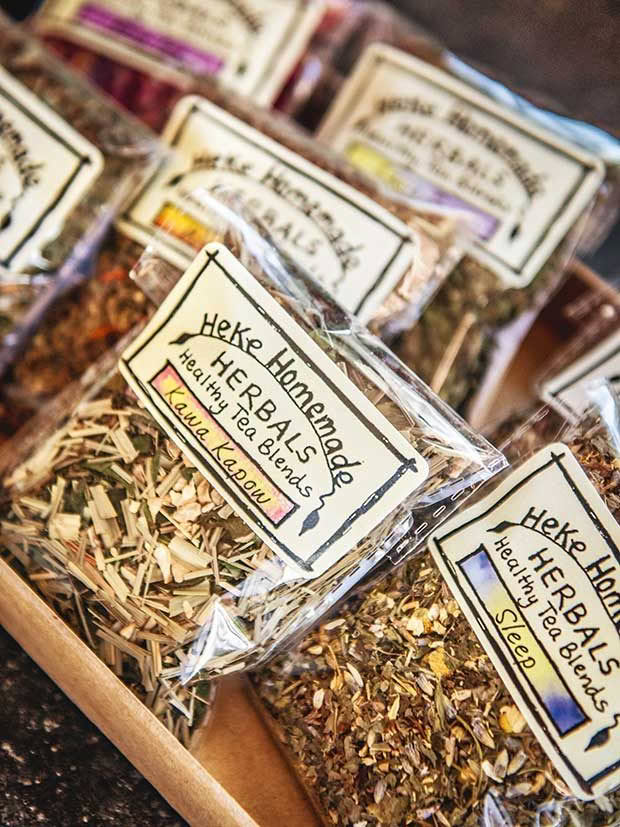
“It was so surprising to me, right from the beginning that I sold out and I had orders backlogged – I couldn’t quite believe it.”
That’s when Emma knew it was time to dig up the lawn. Friends and family helped rotary-hoe the terraced garden beds and supplied her with herb seedlings. She also sourced plants from Small Beginnings, a local business that specialises in hardy varieties that suit Nelson’s climate.
Emma had ambitious goals for her business, more than just perfecting the art of making a good cuppa. She wanted to show it was possible to do something profitable using the most marginal of gardens. She wanted to work outside the 9-5 grind and around the needs of her son, Connor.
“It grew very, very quickly and I spent the first year scrambling around trying to keep up with demand. I have deliberately controlled the growth of this business so that I can spend time with Connor, it had to be comfortable for us. At the end of the second year, I reached a much more manageable level that keeps me sane.”
Today, it’s a six-day-a-week, full-time job, but never a grind.
“Recently I’ve given myself a day off, because you have to or it’s not sustainable. Every Friday I don’t do anything, and it’s making me more productive.”
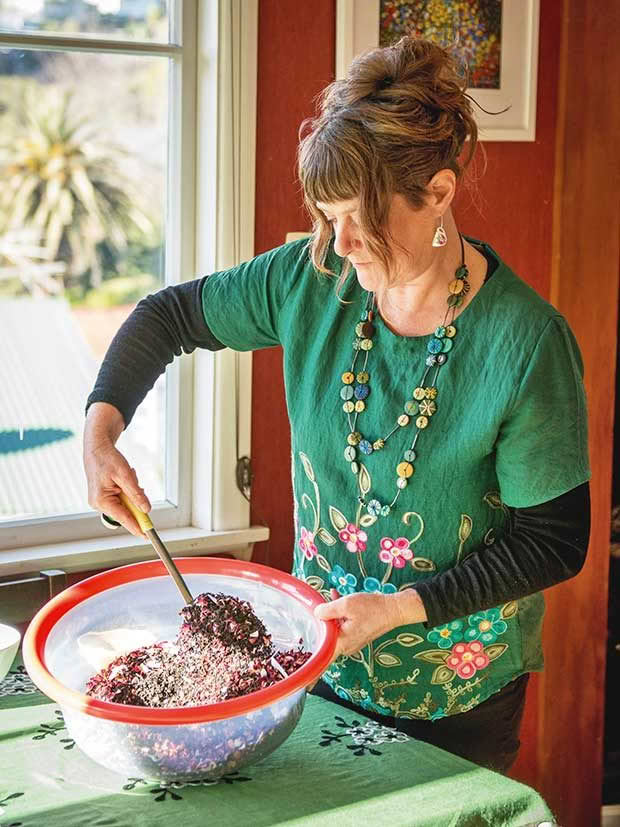
Emma now has over 40 teas in her range, all based on what she calls a wellness theme. Customers can’t get enough.
“People initially buy their teas from me at a market, then return to their towns and cities, try them, love them and order more (through the Facebook page). Every time I do a market, my customer base grows. The courier vans are wearing out the driveway.”
Emma’s business starts as soon she walks out the door. Her entire property is ‘sow to go’, filled with vibrant herbs and plants that she grows, tends, harvests, dries, blends, packages, and posts.
She already had an extensive knowledge of herbs but did a certificate in Herbal Medicine with the NZ School of Naturopathy to fill in the gaps.
“I still grow a lot of the herbs, but because the business grew so quickly, I grew out of my garden. Now I have people all over New Zealand growing for me. I definitely think the fact that 90 percent of the herbs I use are New Zealand-grown, that they haven’t been sitting around in a warehouse, is important.”
- Emma’s south-facing garden is mostly steep terraces, making it marginal for growing.
- Camellia sinensis.
The rest is imported, mostly herbs that don’t grow in NZ, from organic suppliers. She was happy to discover that Camellia sinensis, the plant in her favourite childhood ‘gumboot’ tea, grows well in her backyard. It is one of the two main varieties grown worldwide, harvested for white, yellow, green, oolong, pu-erh and black tea.
Each packet of Heke Homemade Herbal tea satisfies food safety requirements. They feature a label that outlines the potential benefits of the herbs. Emma must be very careful about the wording. She was put onto an Auckland-based expert who gave her invaluable advice on how to meet labeling regulations for health products
“The right doors opened at the right time,” she says.
Her business has doubled in size in the last year. She now sells at markets and festivals around the Tasman region, and travels to the Newtown Fair in Wellington. Everywhere she goes, she offers people a good whiff of her product range. Her sniffing jars hold small samples of each individual tea. It’s a good way to tell if you will like a tea once it has been brewed, says Emma.
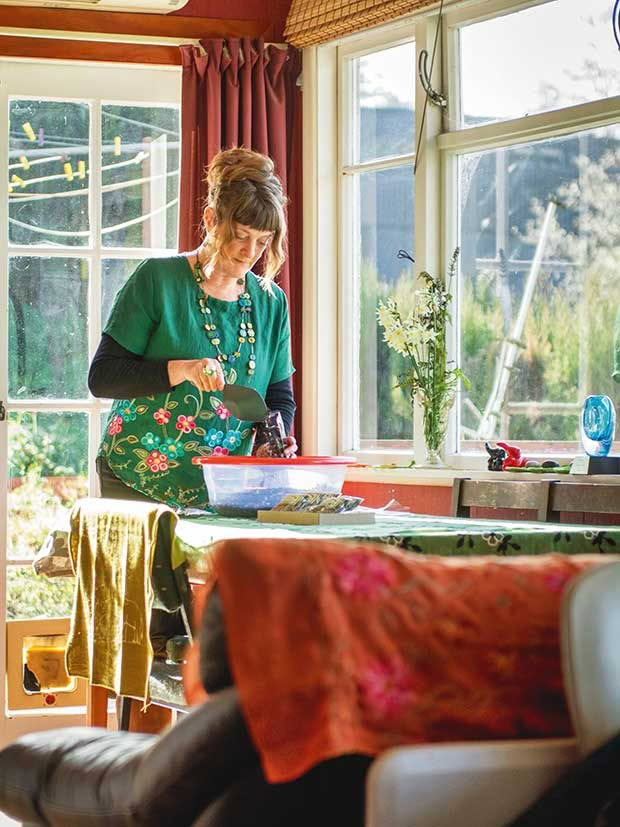
Emma dries the herbs, and mixes, bags and posts them all herself.
She has a not-very-much-marketing, marketing plan.
“The business has definitely grown and evolved on its own. It has been massively word-of-mouth and also utilises Facebook, the only social media I do. I figured I’d do one and do it well and have my shop on Facebook. I don’t want to spend my whole day on a computer, I want to be making teas.
“My idea has been to spend as little… or even have a zero marketing budget, because once you spend on that, you have to put the costs onto the price of the teas.”
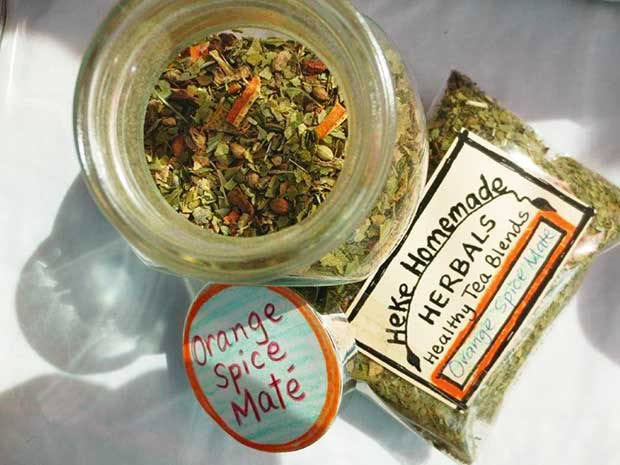
One of Emma’s sniff pots.
Keeping her teas affordable is another important aspect of her business.
“I have some 12-year-olds who use their pocket money to buy my tea and I love that.”
Her three most popular teas are Wellbeing, Soothe and Spicy Red Chai. Sleep tea is always the one she runs out of first at markets. For novelty value, her Hot, Hot Chocolate tea has been a winner thanks to spicy NZ native, horopito (Pseudowintera colorata, a woody shrub). Emma also makes iced teas in summer, and more heart-warming brews in winter.
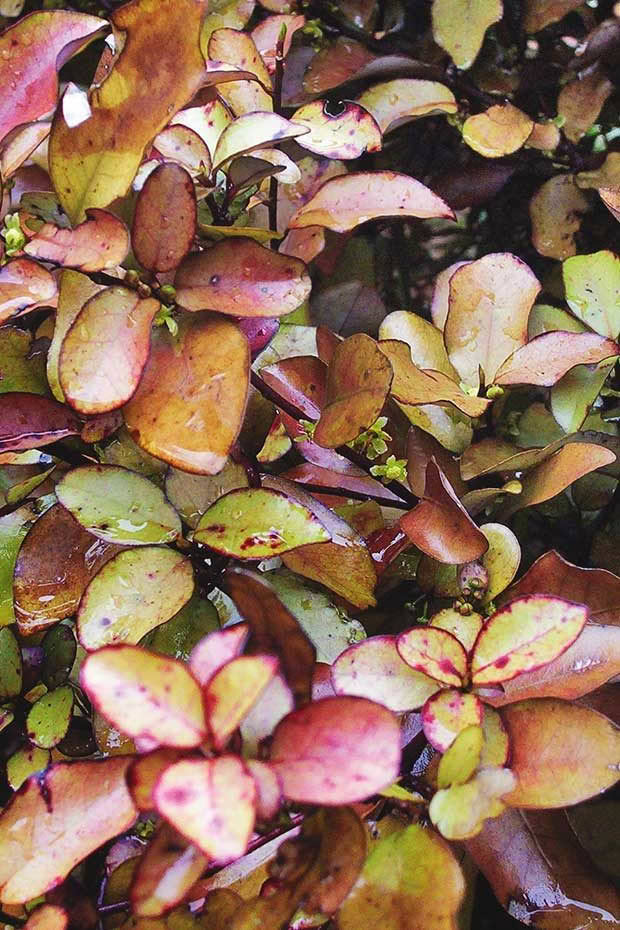
Horopito.
The demand for good quality herbal teas has presented some unique business opportunities. A growing number of cafés and organic shops are now using and selling Emma’s teas. She’s also excited about the signature blends she is creating for boutique accommodation providers.
“It’s right down my creative alley. I’ve been making one for Tongariro Suites (near Ohakune). They are surrounded by horopito and manuka and they wanted their horopito and manuka used, so they sent it down to me and I put together some amazing teas.”
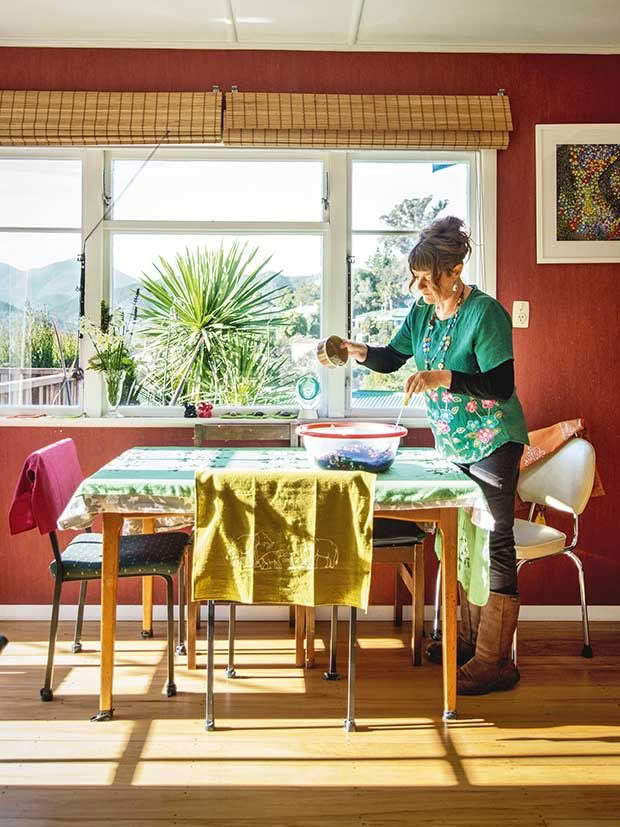
She has also supplied herbal blends to craft beer-makers, MacCashin’s Brewery in Stoke, which used them to flavour a competition beer.
Emma spends part of every day posting orders to customers all over NZ. That process presented another challenge for this eco-conscious entrepreneur.
“I’m changing all our packaging to be completely zero-waste, which is really exciting but has been really difficult. We were always offering a zero-waste option, but it meant hand-wrapping everything in re-used paper, which I love doing. But it takes a lot of time and I’m only one person.
“I found an Auckland company, R3pack, which makes compostable courier bags. It’s all new technology so we’ve switched to that – no more plastic.”
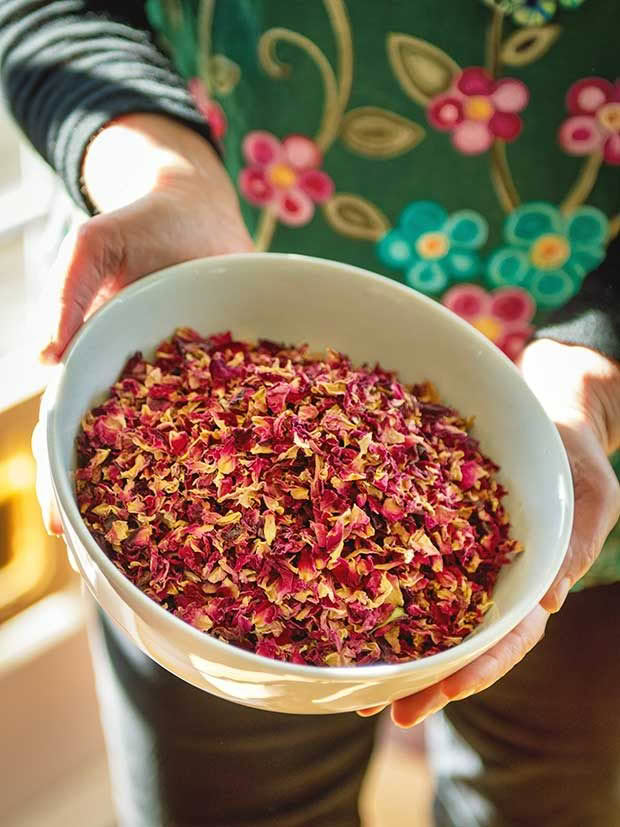
Another challenge was taking the plastics out of the bags the tea is stored in.
“I worked with an American company to create a bag for me that is food-safe, has a moisture barrier, a clear window, and is also home-compostable, and we’ve cracked it – I’ve just put in my first order.”
Emma has won an Innovation Award from the NPI Nelson Tasman Chamber of Commerce Business. The judges commented on her “terrific dedication and commitment” and “relentless pursuit of refining her art”.
However, it’s not Emma’s biggest accolade.
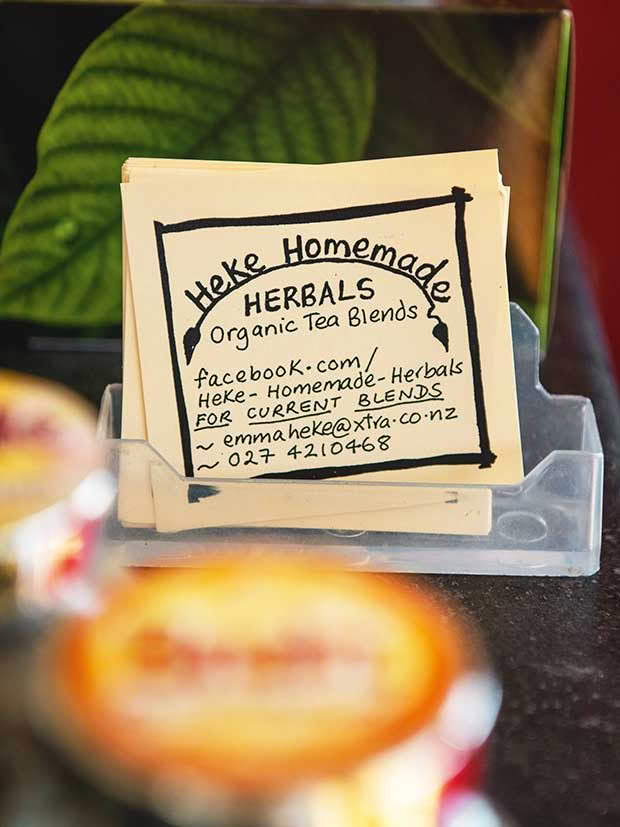
Emma’s marketing plan is mostly word-of-mouth, and her Facebook page.
“When I first started, my father, who’s 81, told me, ‘what are you doing, that’s not tea, that’s dreadful hippy stuff, it’ll never take off’.
“He’s been so turned around by the whole thing. He’s come off his gumboot tea and he drinks my Energise tea (a green tea-herbal blend) which is incredible.
“It has had that kind of impact on a lot of people. They’ll say ‘I don’t drink tea’, then they’ll have a sample at a market and they’ll say, ‘oh my gosh, I didn’t know tea could taste like that, that’s not what I know as tea’.”
- The teas are all based on a ‘wellness’ theme.
- Emma dries all her ingredients.
- Emma at her local market.
- Plastic bags will soon be replaced with a new, no-plastic option.
HOW TO GROW A QUALITY HERBAL TEA
Herbal tea might seem to be a simple product, but many of the herbals teas you can buy are not. Emma believes simplicity is one of the secrets to her success.
“I harvest herbs, I have herbs couriered to me fresh. I dry the herbs; they’re naturally air-dried and it’s quite a process. They’re very well looked after, and they end up being great colours and textures.”
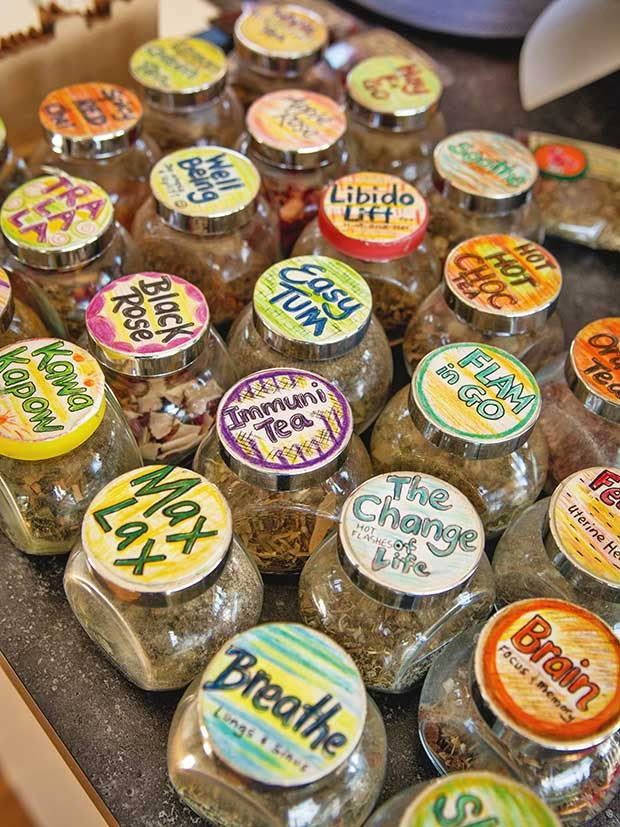
Each tea has its own ‘sniff pot’, a useful way to know if you’ll like a tea once it’s brewed.
Contrast that with most commercially-produced herbal teas.
“There’s a lot of herbal tea out there, but (the ingredients) pretty much come from the same place. Companies mix it up, rebrand it, it goes into different bags.
“I’m in a unique position. I dry the herbs and then – depending on how many weeks they take to dry – they are in a packet of tea within a month or two. You’re looking at years for those other teas. Mine is about as opposite to that as you can get, so the freshly-picked-and-dried aspect is huge.”
Emma recommends people pick up a packet of herbal tea, turn it over and read the label. What you’re getting isn’t always what you think.
“People never think to look at the label. I’ve had people ask me, ‘can you do a berry tea?’ And I explain, my teas are natural flavours. Some of those teas use a chemically-made flavour, you can’t get it from straight herbs and fruits.
“There are even some teas that aren’t gluten-free. You would think (a herbal tea) would be all plant materials, but some have malt or barley added. That’s another advantage I think; mine are simply plants, the leaves, the roots, the flowers or the seeds.”
Each of Emma’s teas have two key elements: what she calls a ‘wellness’ factor, and flavour.
“I’ll identify a need, the health benefits. The herbs need to work for the wellness factor I’m trying to give it.”
Flavour is a fine balance.
“The ratios are so important. You don’t want to waste herbs, so I research something first. I know the flavour profiles of the herbs really well, what goes together and what doesn’t, taste-wise. I don’t take other people’s recipes: my teas are unique.”
The first test for a tea to pass is Emma’s palate.
“Some don’t get passed me. but usually, I’ll keep going until something is spot on. Then I send it out to my test people. If I get the tick from them, then it will go to market.”
One of her most recent creations is called Awake and Aware. Emma says it’s the most ‘out there’ tea she’s ever made, her take on coffee.
“I’ve found more people are really wanting to kick their coffee habit, but can’t stand the thought of tea. I created a mixture of a green tea, peppermint, cacao flakes, Siberian ginseng, yerba mate (a type of holly tree), and horopito. It’s absolutely ‘wow’ and I’m so happy with it.
“There’s a satisfaction that coffee gives people, and this has it. But it doesn’t do the ‘spiking’ thing, it doesn’t ‘drop’ you like coffee does. The whole thing was a real balance of ratios (of the herbs) to get right.
“I have a fine art degree and I am an artist. Making tea is just like that. I love it with a passion and it’s the same creativity that I tap into.”
HOW EMMA BECAME A TEA LADY
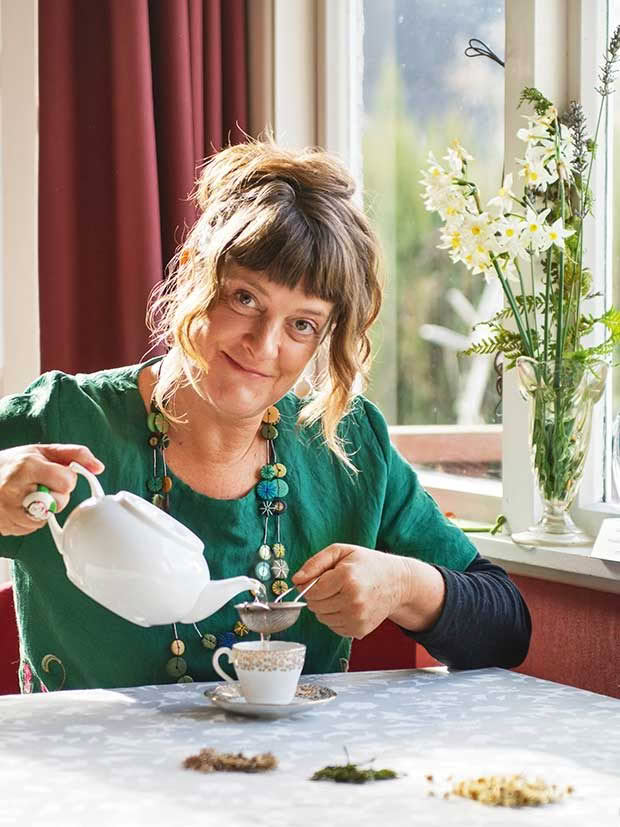
Emma’s unusual background has provided her with a unique set of skills. She graduated with a fine art degree from Dunedin Art School and set up her own papier mâché business, custom-making sculptures. She worked in Sydney as a professional photographer, then trained to be a high school art and photography teacher.
When Connor was born, she had to reinvent her career. She made educational films for children, and a DVD called Our Green Roadie, where she and Connor traveled NZ meeting eco-entrepreneurs.
That trip led Emma to Nelson and a marginal garden in the hills.
“Nelson felt like a safe place to bring up a young boy.
“I’ve done all these different things, and everything I’ve done prior to the herbal tea business has come into it: my art career, the teaching, being able to talk to people. I have a lot of individual relationships with customers.
“You spend such a lot of your life working, you really need to be into what you’re doing, or there’s not much point. I’m very passionate about what I do.”
EMMA’S 6 HERB-DRYING TIPS
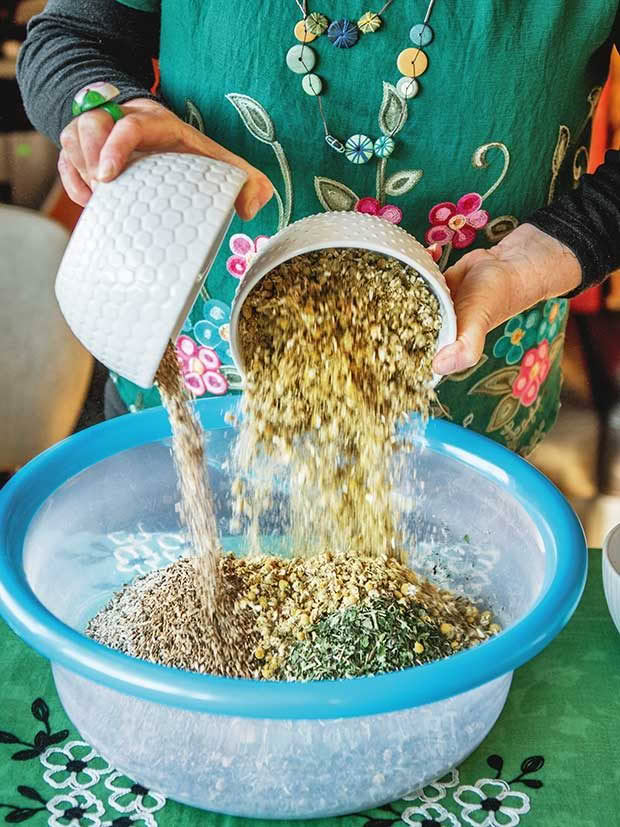
Herbs dried this way last for years.
◊ Pick only the best, blemish-free herbs.
◊ Remove leaves from thick stems and dry separately (either chop stems finely or discard). Don’t hang them in bunches or you will get uneven drying and risk attracting insects and mould.
◊ Lay in thin, horizontal layers on flat trays, out of sunlight, in a well-ventilated space.
◊ Turn over the next few days to aerate and dry out the herbs.◊ Hang in paper bags and shake daily, until completely dry (about a week).
◊ Do the look, smell, feel and taste tests:
– does it look a good colour (not faded or brown)?
– does it smell fresh?
– does it feel crispy-dry?
– when you make a cup of tea, does it taste good?
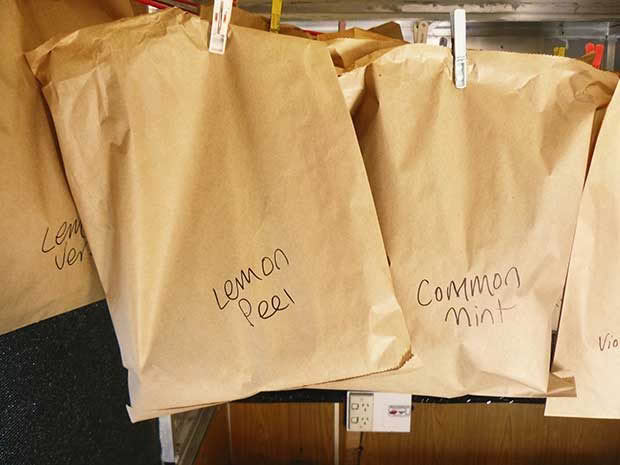
KRISTINA’S ALTERNATIVE HERB-DRYING TECHNIQUE
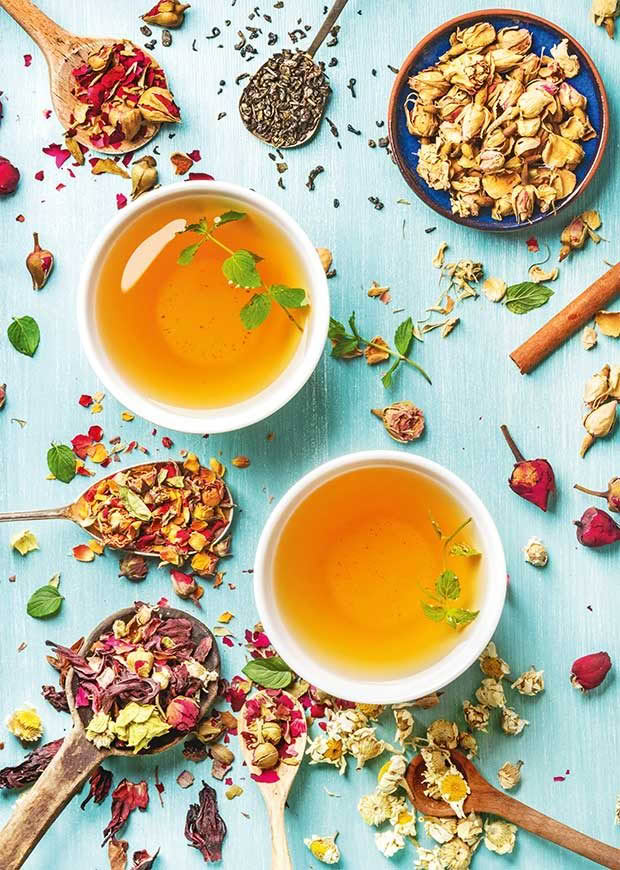
Bunches of herbs hanging from the rafters might look beautiful, but spiders and other insects view them as prime real estate. I dry herbs in small bags made from recycled net curtains.
Step 1: Cut out a rectangle of netting, approximately 30x55cm in size. If you have lots of plant material to dry, make the bags bigger.
Step 2: Fold the fabric in half lengthwise and sew up the sides.
Step 3: Turn the bag in the right way (seams on the inside) and fold the top edge over on the inside to form a tube for the drawstring (3-4 cm). Begin sewing this tube all the way around. Leave a small gap at the end of the tube for the drawstring to go in and out.
Step 4: Tie a piece of string or ribbon onto a safety pin. Push it into the tube and thread the string or ribbon through until it comes out the gap.
Step 5: Tie a knot with the two ends and pull the drawstring in to close the top of your net bag.
Step 6: Use scissors to harvest fresh green herbs for your next cup of tea. Take the net bag with you and chop herbs straight into it.
Step 7: Hang it up in a warm dark corner of your kitchen for 2-3 weeks, fluffing the drying herbs around often, to redistribute the plant material as it dries. To finish off the drying process, spread the herbs onto a clean metal tray and pop them into an oven set on 50°C for 10-15 minutes. They can then be stored in an airtight container.
WHERE TO BUY EMMA’S HOME-MADE HERBAL TEA
Nelson-Tasman-Wellington markets.
Check Emma’s Facebook page for her upcoming markets.
Love this story? Subscribe now!
 This article first appeared in NZ Lifestyle Block Magazine.
This article first appeared in NZ Lifestyle Block Magazine.
